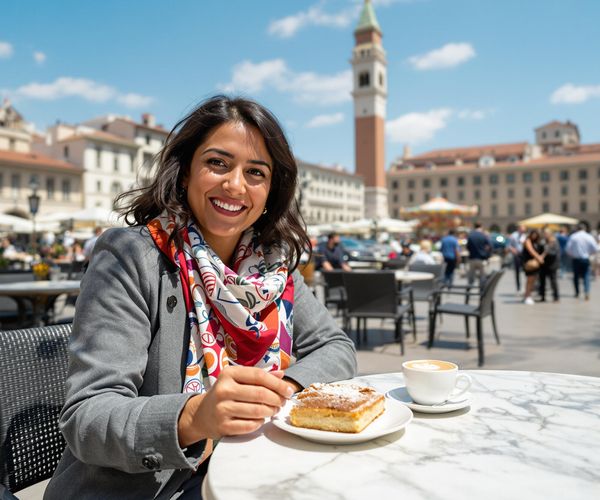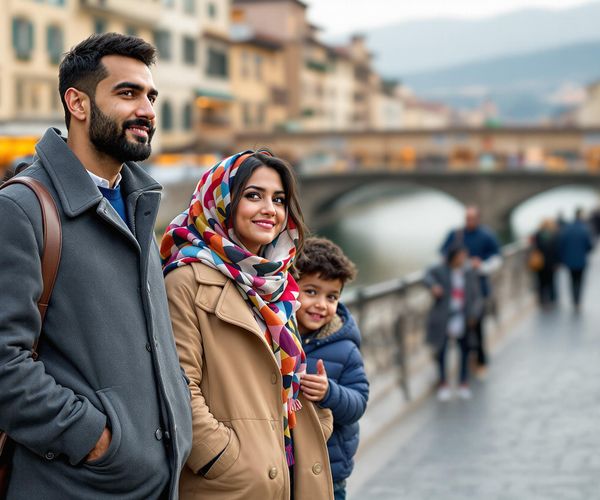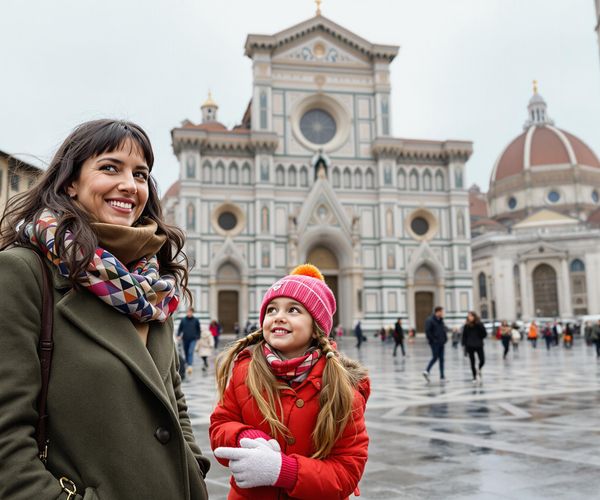
San Gimignano: The Medieval Manhattan of Tuscany
Discover San Gimignano: A timeless Tuscan treasure with medieval towers, rich history, exquisite wines, and stunning landscapes.
San Gimignano, often called the 'Medieval Manhattan', is a small walled village in the heart of Tuscany, Italy. It is famous for its stunning towers, which were built by noble families during the 12th and 13th centuries as a display of their wealth and power. Today, 14 of these impressive towers remain, offering a glimpse into the past and providing breathtaking views of the surrounding countryside. Walking through the narrow, cobblestone streets of San Gimignano is like stepping back in time. The town's medieval architecture has been remarkably preserved, and visitors can explore historic sites such as the Collegiata, a Romanesque church adorned with beautiful frescoes, and the Palazzo Comunale, which houses the Civic Museum and an art gallery with works by famous Italian artists. San Gimignano is also renowned for its local cuisine and wines. The region is particularly noted for its Vernaccia di San Gimignano, a crisp white wine that has been produced here since the Renaissance. Visitors can enjoy wine tastings at local vineyards and sample traditional Tuscan dishes at charming trattorias and restaurants. Beyond its historical and culinary attractions, San Gimignano offers a range of activities for all types of travelers. Hike through the picturesque hills, visit nearby farms to learn about olive oil production, or simply relax in one of the many scenic piazzas and soak up the town's enchanting atmosphere.
Local tips in San Gimignano
- Visit early morning or late afternoon to avoid crowds and enjoy a more peaceful experience.
- Wear comfortable shoes as the cobblestone streets can be uneven and steep in places.
- Take a guided tour to fully appreciate the historical significance of the town's landmarks.
- Try the local gelato, which has won numerous awards for its quality and flavor.
- Check the local calendar for festivals and events, as San Gimignano hosts several vibrant celebrations throughout the year.
San Gimignano: The Medieval Manhattan of Tuscany
San Gimignano, often called the 'Medieval Manhattan', is a small walled village in the heart of Tuscany, Italy. It is famous for its stunning towers, which were built by noble families during the 12th and 13th centuries as a display of their wealth and power. Today, 14 of these impressive towers remain, offering a glimpse into the past and providing breathtaking views of the surrounding countryside. Walking through the narrow, cobblestone streets of San Gimignano is like stepping back in time. The town's medieval architecture has been remarkably preserved, and visitors can explore historic sites such as the Collegiata, a Romanesque church adorned with beautiful frescoes, and the Palazzo Comunale, which houses the Civic Museum and an art gallery with works by famous Italian artists. San Gimignano is also renowned for its local cuisine and wines. The region is particularly noted for its Vernaccia di San Gimignano, a crisp white wine that has been produced here since the Renaissance. Visitors can enjoy wine tastings at local vineyards and sample traditional Tuscan dishes at charming trattorias and restaurants. Beyond its historical and culinary attractions, San Gimignano offers a range of activities for all types of travelers. Hike through the picturesque hills, visit nearby farms to learn about olive oil production, or simply relax in one of the many scenic piazzas and soak up the town's enchanting atmosphere.
When is the best time to go to San Gimignano?
Iconic landmarks you can’t miss
Piazza del Duomo
Discover the enchanting Piazza del Duomo, a UNESCO World Heritage Site in San Gimignano, filled with medieval charm and stunning architecture.
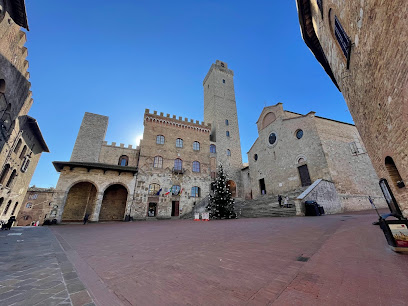
Le Vecchie Mura
Experience authentic Tuscan flavors and stunning views at Le Vecchie Mura, a culinary gem in the heart of San Gimignano.
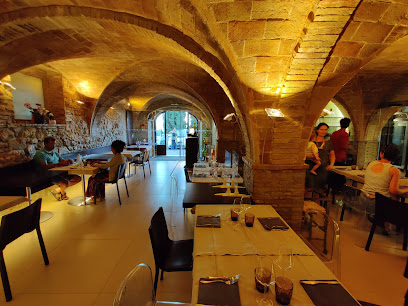
Porta San Giovanni
Discover the historic charm of Porta San Giovanni, a magnificent medieval gateway to the enchanting town of San Gimignano in Tuscany.
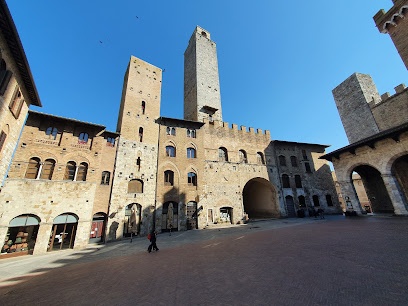
Piazza della Cisterna
Discover the enchanting Piazza della Cisterna, a historical gem in San Gimignano, surrounded by medieval towers and rich Tuscan culture.
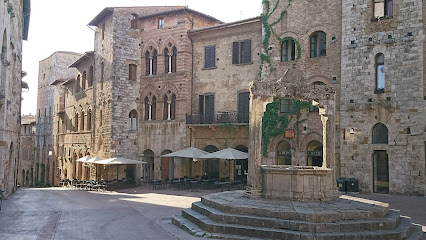
Chiesa di Sant'Agostino
Discover the exquisite Chiesa di Sant'Agostino in San Gimignano, where Gothic architecture meets serene spirituality in a historic setting.

Palazzo Comunale, Pinacoteca, Torre Grossa
Discover the artistic treasures and historic significance of Palazzo Comunale and Torre Grossa in the breathtaking town of San Gimignano, Tuscany.
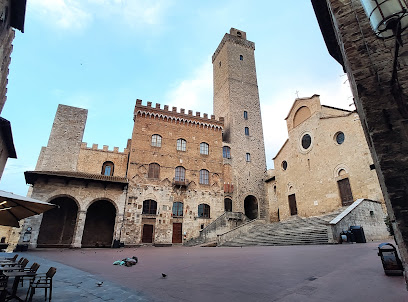
Museum of Torture
Explore the chilling history of punishment and justice at the Museum of Torture in San Gimignano, a unique journey into humanity's darker past.
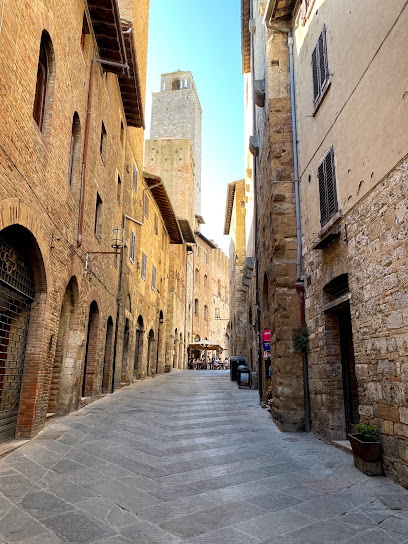
Tower and Casa Campatelli
Discover the historic beauty of Tower and Casa Campatelli in San Gimignano, a must-visit for lovers of medieval architecture and culture.

Guardastelle
Experience the tranquility of Tuscany at Guardastelle, a charming farmstay and vineyard in San Gimignano, where wine and nature unite.
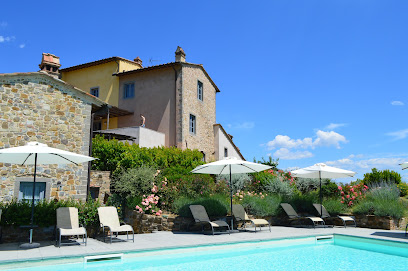
Hotel Leon Bianco
Immerse yourself in the charm of San Gimignano at Hotel Leon Bianco, where history meets modern comfort in the heart of Tuscany.
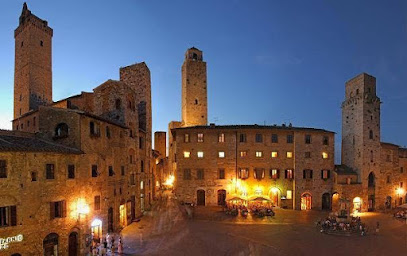
Parco della Rocca
Explore Parco della Rocca in San Gimignano: A timeless park blending history and nature with stunning views of Tuscany.
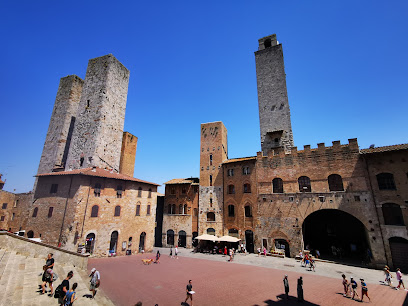
Fonti Medievali
Explore the enchanting Fonti Medievali in San Gimignano, a historical gem showcasing the beauty and charm of medieval Tuscany.
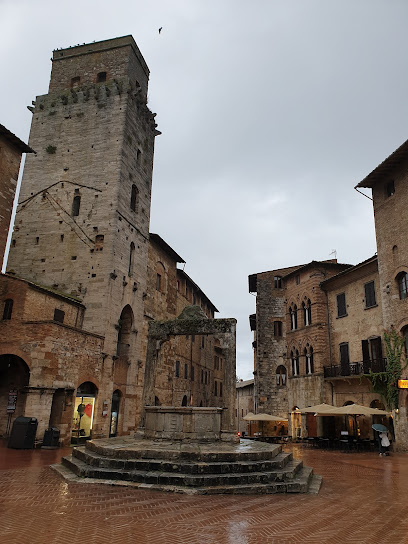
Museo Della Tortura E Della Pena Di Morte
Explore the unsettling yet fascinating history of punishment and justice at Museo Della Tortura in San Gimignano, a must-visit for history enthusiasts.

Podere La Marronaia - Biodynamic Winery & Farm
Discover the beauty of biodynamic farming and exquisite wines at Podere La Marronaia, a hidden gem in the heart of Tuscany.
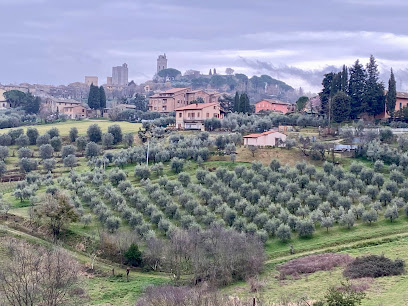
SanGimignano1300
Explore the captivating history and culture of San Gimignano at the SanGimignano1300 Museum, a treasure trove of art and heritage.

Unmissable attractions to see
Cathedral of Santa Maria del Fiore
Discover the stunning Cathedral of Santa Maria del Fiore, a masterpiece of Renaissance architecture in the heart of Florence, Italy.
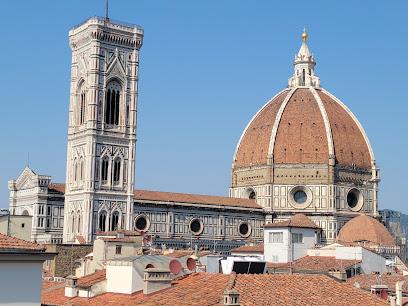
Piazza della Signoria
Explore the cultural heart of Florence at Piazza della Signoria, a historic square filled with stunning architecture and Renaissance masterpieces.
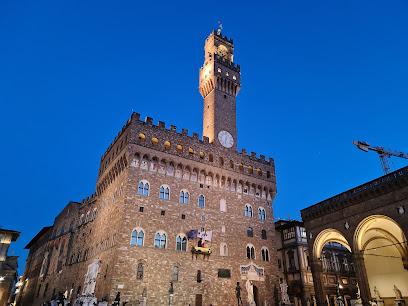
Uffizi Galleries
Explore the Uffizi Galleries in Florence, home to Renaissance masterpieces and a treasure trove of Italian art history.

Piazza del Campo
Discover the enchanting beauty and rich history of Piazza del Campo, Siena's iconic square, a must-see for any traveler exploring Tuscany.
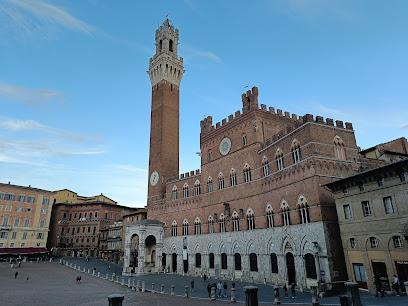
Galleria dell’Accademia di Firenze
Explore the Galleria dell’Accademia di Firenze, home to Michelangelo's David and a stunning collection of Renaissance art that captivates all who visit.
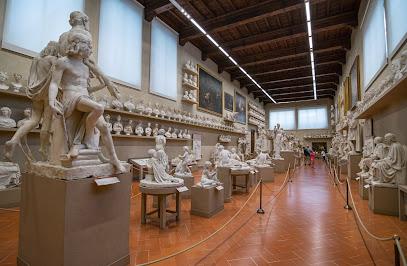
Basilica of Santa Croce in Florence
Explore the Basilica of Santa Croce in Florence, a stunning gothic masterpiece rich in art and history, and the resting place of Italy's greats.
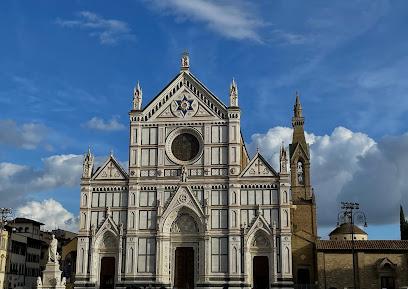
Palazzo Pitti
Discover the opulent wonders of Palazzo Pitti, a stunning Renaissance palace filled with masterful art and beautiful gardens in the heart of Florence.
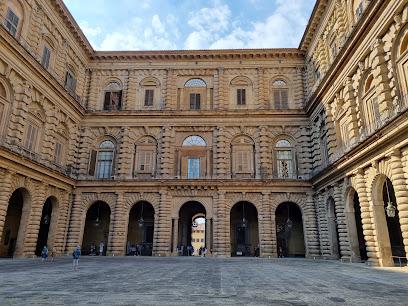
Basilica of Santa Maria Novella
Explore the stunning beauty of the Basilica of Santa Maria Novella, a masterpiece blending Gothic and Renaissance architecture in the heart of Florence.
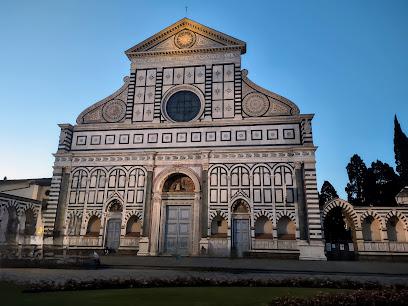
Siena Cathedral
Discover the breathtaking beauty and rich history of Siena Cathedral, a masterpiece of Gothic architecture in the heart of Tuscany.
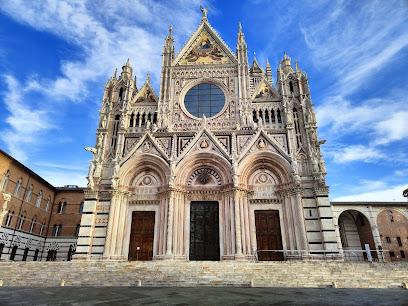
Leonardo Da Vinci Museum
Discover the brilliance of Leonardo da Vinci at his dedicated museum in Florence, where art and invention come alive through interactive experiences.
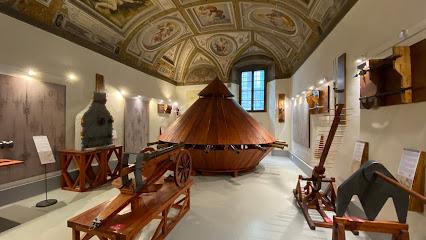
Boboli Gardens
Explore the enchanting Boboli Gardens in Florence, a historic park filled with art, sculpture, and stunning city views.
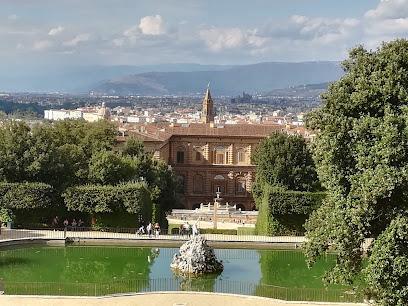
Palazzo Vecchio
Explore the rich history of Florence at Palazzo Vecchio, a stunning museum and historical landmark brimming with art and architectural marvels.
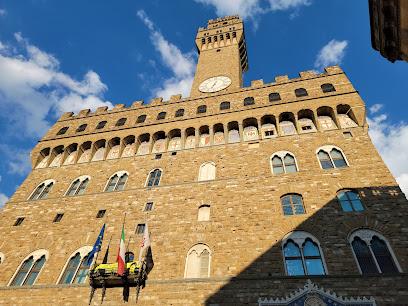
San Galgano Abbey
Experience the mystical charm of San Galgano Abbey, a historical gem in the Tuscan landscape that inspires awe and reflection.
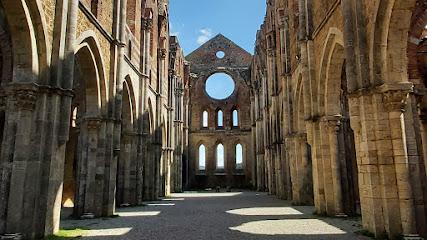
Leonardo da Vinci Interactive Museum
Discover the brilliance of Leonardo da Vinci with interactive exhibits showcasing his genius in art and science at the heart of Florence.
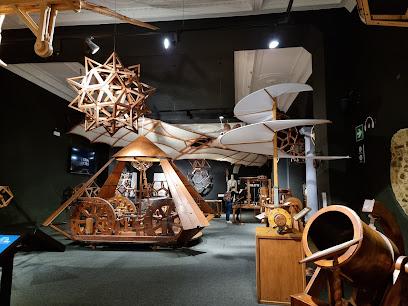
Parco delle Cascine
Explore the lush landscapes and vibrant gardens of Parco delle Cascine, Florence's largest park that offers a perfect blend of nature and culture.
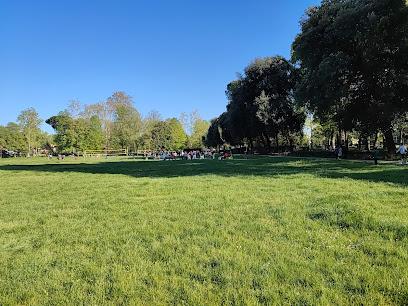
Essential places to dine
Le Vecchie Mura
Experience authentic Tuscan cuisine in San Gimignano's enchanting atmosphere at Le Vecchie Mura.
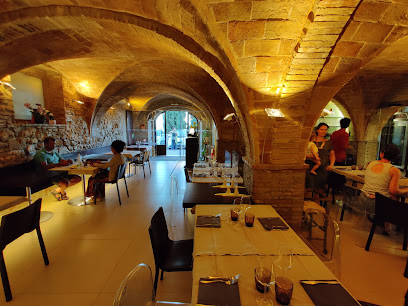
Il Feudo
Experience authentic Tuscan flavors at Il Feudo, where traditional Italian cuisine meets stunning views in San Gimignano.
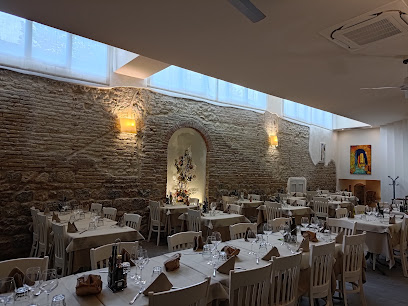
La Mandragola
Experience authentic Italian cuisine at La Mandragola in San Gimignano – where every dish tells a story.
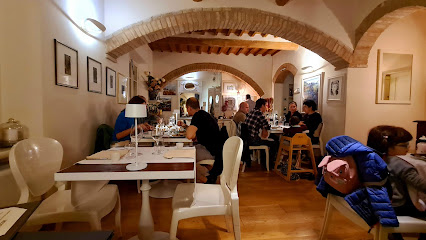
Perucà
Experience authentic Tuscan flavors at Perucà in San Gimignano – where tradition meets taste in every bite.
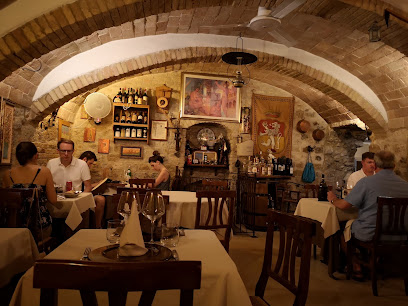
Il Ceppo Toscano
Experience authentic Tuscan cuisine at Il Ceppo Toscano in San Gimignano – where every dish tells a story.
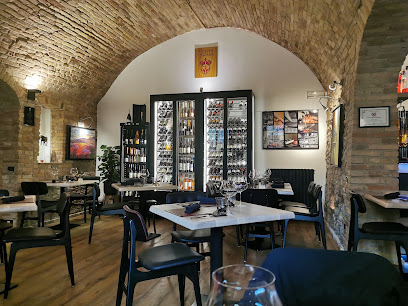
Trattoria Rigoletto
Experience authentic Italian flavors at Trattoria Rigoletto in San Gimignano – where every meal tells a story.
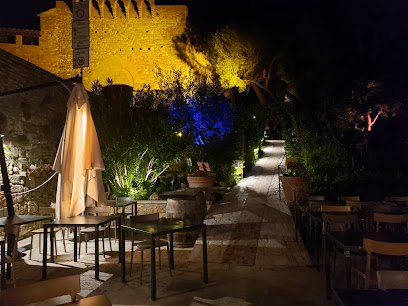
Lo Spuntino
Discover authentic Italian cuisine at Lo Spuntino in San Gimignano – where every bite takes you on a culinary journey through Tuscany.
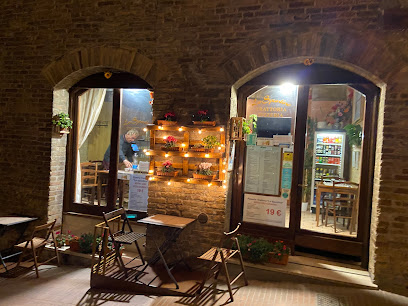
Chiribiri
Discover authentic Tuscan cuisine at Chiribiri in San Gimignano - where tradition meets flavor in a charming setting.
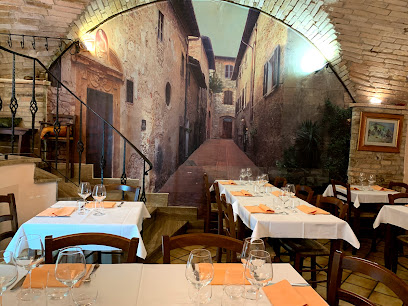
Ristorante Fuoriluogo
Experience authentic Tuscan flavors at Ristorante Fuoriluogo in San Gimignano - where tradition meets exquisite taste.
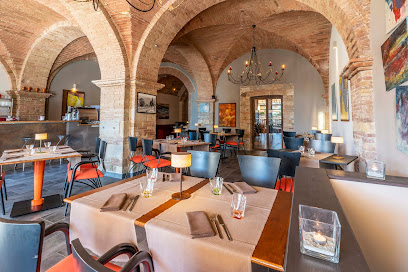
Osteria Baccano
Experience authentic Italian flavors at Osteria Baccano in San Gimignano - where tradition meets taste in every bite.
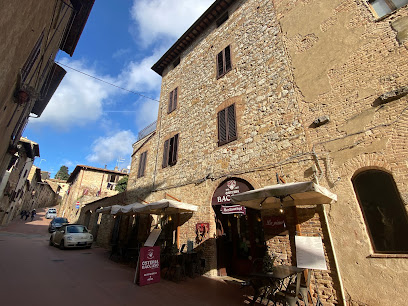
Ristorante Bel Soggiorno
Experience authentic Tuscan cuisine at Ristorante Bel Soggiorno in San Gimignano - where every dish tells a story.
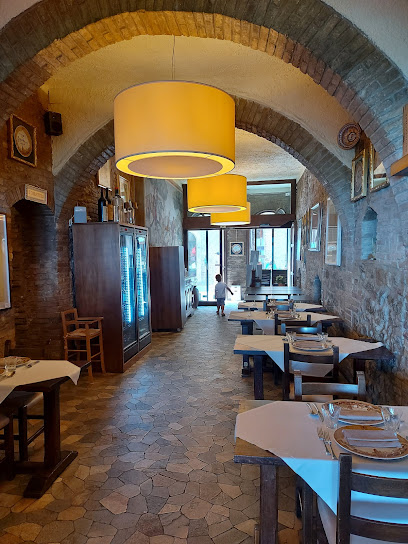
Il Trovatore
Discover Il Trovatore in San Gimignano: A delightful blend of authentic Italian cuisine featuring pizza and steak amidst enchanting Tuscan scenery.
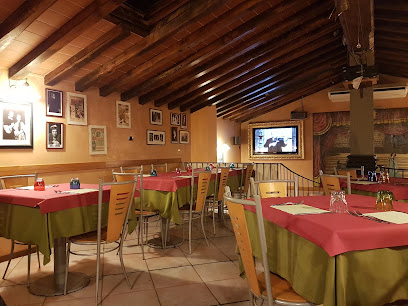
Locanda Di Sant'Agostino Osteria
Experience authentic Italian cuisine at Locanda Di Sant'Agostino Osteria in San Gimignano—where tradition meets flavor in a charming Tuscan setting.
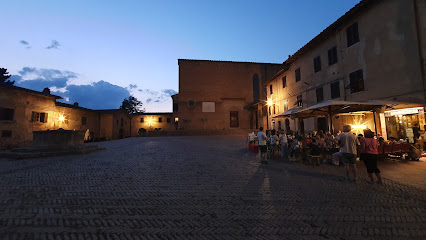
Ristorante da Pode
Experience authentic Tuscan cuisine at Ristorante da Pode in San Gimignano, where tradition meets flavor amidst stunning countryside views.
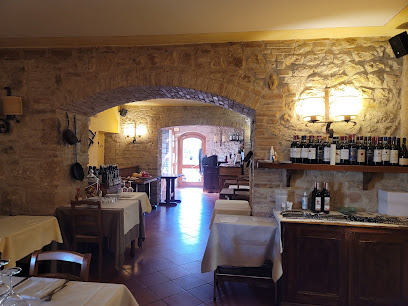
La Mangiatoia
Experience authentic Tuscan flavors at La Mangiatoia, a top-rated Italian restaurant nestled in scenic San Gimignano.
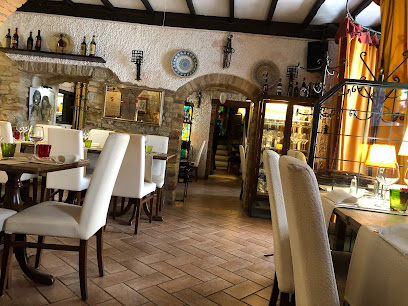
Markets, malls and hidden boutiques
Cuoieria Fiorentina Srl
Explore exquisite craftsmanship at Cuoieria Fiorentina, a premier leather goods store in the heart of San Gimignano, Italy.
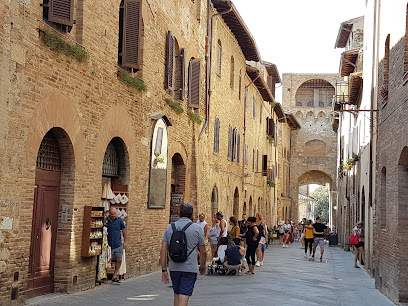
Le Torri s.r.l.
Experience the art of Italian leather craftsmanship at Le Torri s.r.l. in San Gimignano, where quality meets tradition in stunning handmade goods.
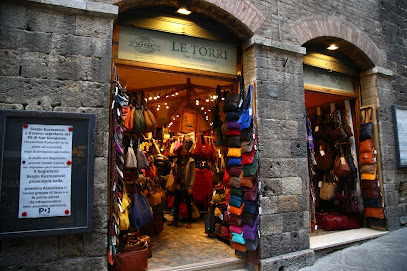
Turris - Medievo e Fantasy
Explore the enchanting world of medieval and fantasy treasures at Turris - Medievo e Fantasy in the picturesque town of San Gimignano.

Maria's Pelletterie San Gimignano & Volterra
Experience the artistry of Italian leather at Maria's Pelletterie, where elegance meets craftsmanship in the heart of San Gimignano.
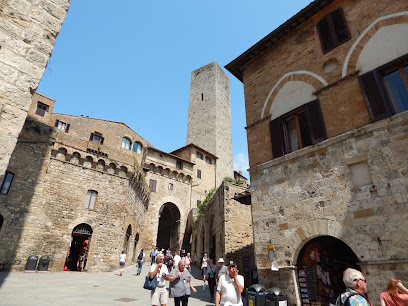
I Malaspina Snc di Massimo Pelusi e Marco Minoliti
Explore exquisite handcrafted leather goods at I Malaspina, a gem in the heart of San Gimignano, showcasing Italy's rich artisan tradition.
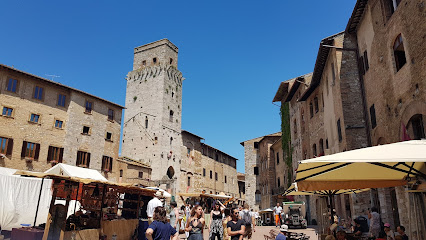
Macallè
Explore Macallè, a charming jewelry store in San Gimignano, where stunning handcrafted pieces await every discerning traveler.
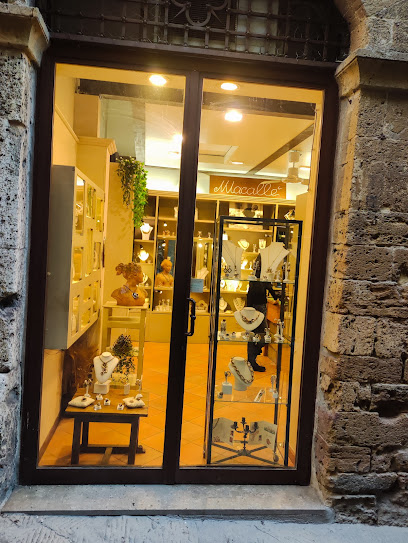
La Bottega Snc
Discover unique Italian fashion at La Bottega Snc in San Gimignano, where tradition meets contemporary style in a charming Tuscan setting.
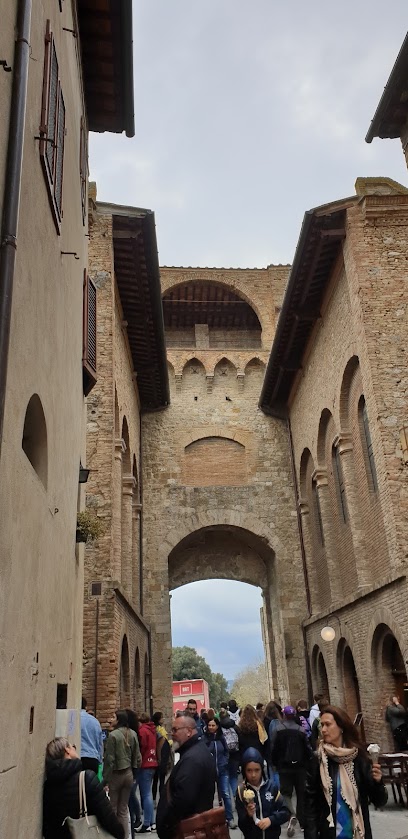
La Bottega Dell' Angolo
Discover the charm of La Bottega Dell' Angolo, a unique cosmetics store in San Gimignano, showcasing artisanal beauty products inspired by Italian tradition.
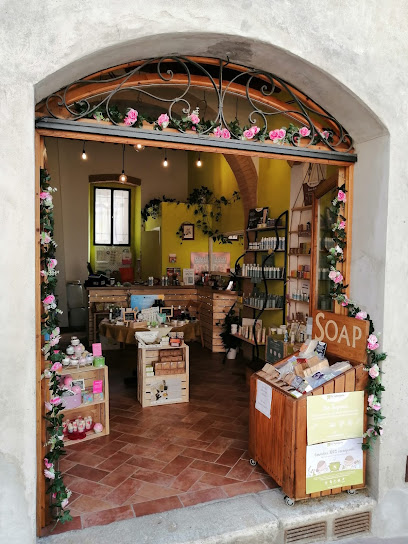
Casa e Cosé Di Magnani Marco
Discover unique handcrafted gifts and local treasures at Casa e Cosé Di Magnani Marco in the heart of San Gimignano, Tuscany.
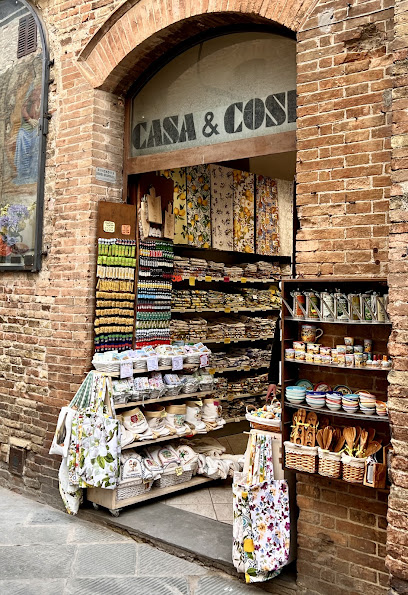
Galleria J
Explore Galleria J in San Gimignano for exquisite jewelry that embodies Italian craftsmanship and rich cultural heritage.

Tinacci Tito & M.Grazia snc
Explore the artisanal delights at Tinacci Tito & M.Grazia, where every piece of pottery tells a story of Tuscan craftsmanship in beautiful San Gimignano.
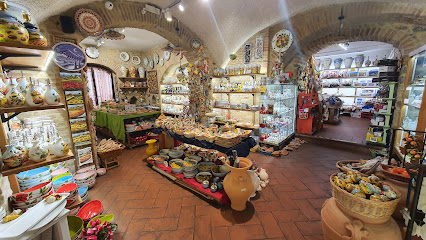
Furla
Discover the luxury of Italian craftsmanship at Furla in San Gimignano, where quality leather goods and stylish accessories await.
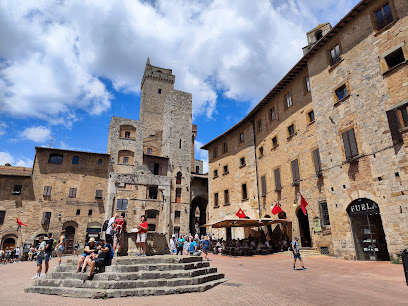
Il Negozio delle Curiosità
Explore stunning artisan pottery in San Gimignano, showcasing the beauty and craftsmanship of Tuscany's rich cultural heritage.
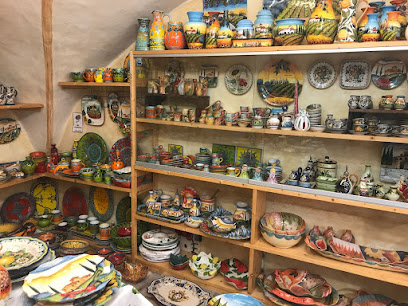
Italian Exclusivity by Calamassi Italy
Explore exquisite clothing, custom tailoring, and authentic leather goods at Calamassi Italy in the heart of San Gimignano.
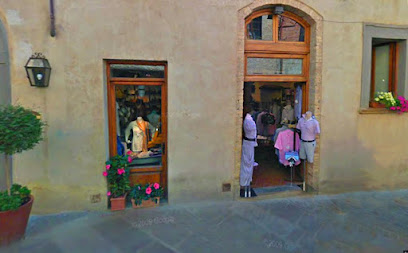
Beconcini Tuscan Handmade
Discover the essence of Tuscany at Beconcini Tuscan Handmade, where artisanal craftsmanship meets local tradition.
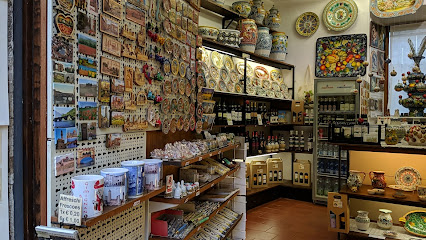
Essential bars & hidden hideouts
Le Vecchie Mura
Experience the authentic flavors of Tuscan cuisine at Le Vecchie Mura, a charming restaurant in the heart of San Gimignano.
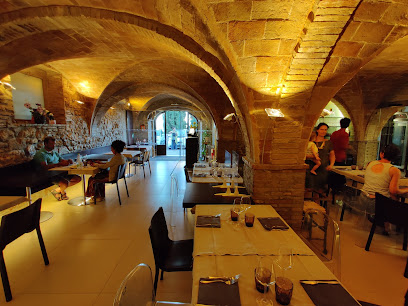
Lo Spuntino
Experience the authentic taste of Italy at Lo Spuntino in San Gimignano, offering delicious pizzas and calzones in a charming setting.
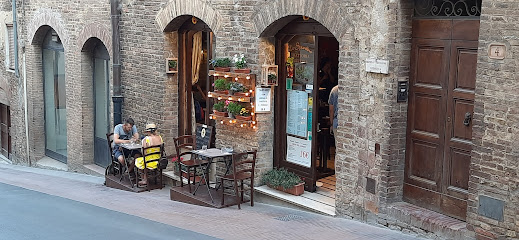
Magnino
Experience the essence of Italian cuisine at Magnino in San Gimignano, featuring delectable dishes and delightful ice cream in a charming bistro setting.
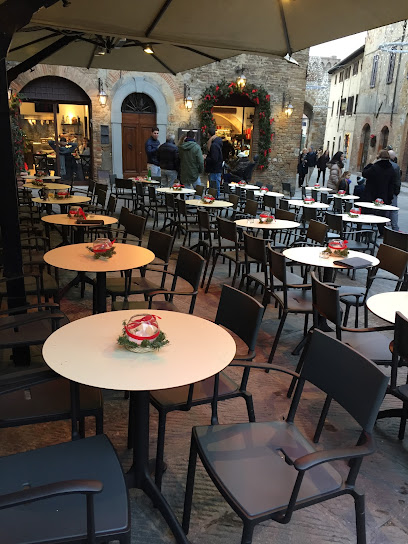
Enjoy ... drink food life
Experience the best of San Gimignano's culinary scene with delicious pizzas, barbecue specialties, and handcrafted cocktails in a vibrant atmosphere.
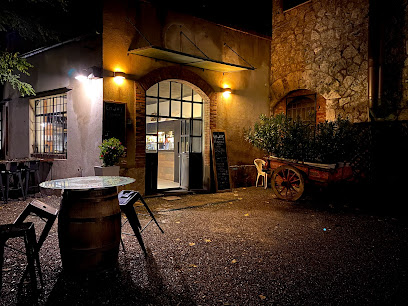
Caffetteria Gelateria dell'Olmo | San Gimignano
Discover the authentic taste of Italy at Caffetteria Gelateria dell'Olmo in San Gimignano, where exquisite gelato and delightful pastries await.
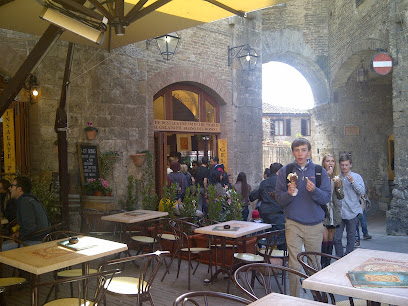
Osteria Delle Catene
Discover the authentic flavors of Tuscany at Osteria Delle Catene, a charming restaurant in the heart of San Gimignano.
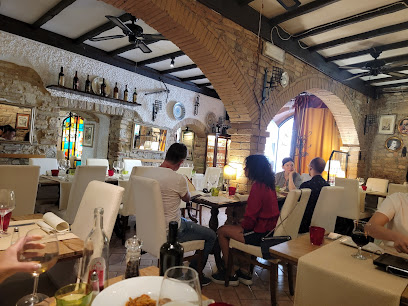
Bar Ristorante Boboli
Discover the authentic flavors of Italy at Bar Ristorante Boboli, a charming spot in San Gimignano renowned for its delicious pizzas and inviting atmosphere.
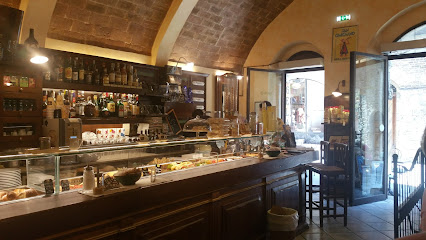
Giardino Bistrot
Experience authentic Italian flavors at Giardino Bistrot, a charming bistro in San Gimignano, perfect for any food lover's journey.
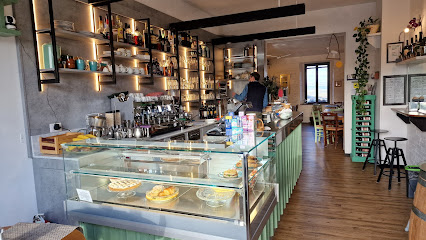
Cum Quibus - Ristorante Toscano
Experience the essence of Tuscan cuisine at Cum Quibus, a charming Italian restaurant in San Gimignano.
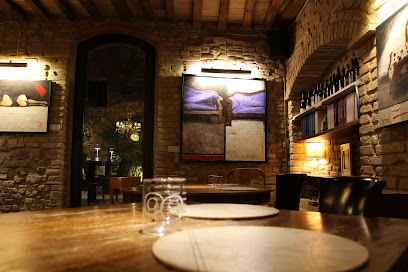
Gustavo Mescita Vini Enoteca
Discover the flavors of Tuscany at Gustavo Mescita Vini Enoteca, a premier wine bar in the heart of San Gimignano, perfect for wine lovers and tourists alike.
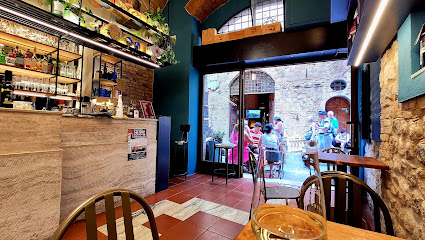
Ristorante San Martino 26
Experience the exquisite fusion of traditional Italian and contemporary cuisine at Ristorante San Martino 26 in the heart of San Gimignano.
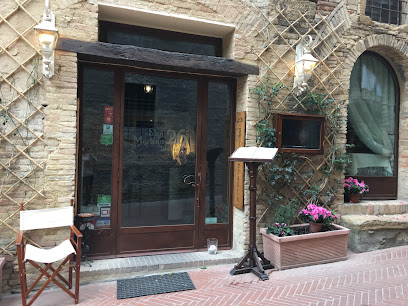
D! Vineria enoteca
Explore D! Vineria enoteca in San Gimignano for an exquisite selection of wines and traditional Italian cuisine in a charming atmosphere.
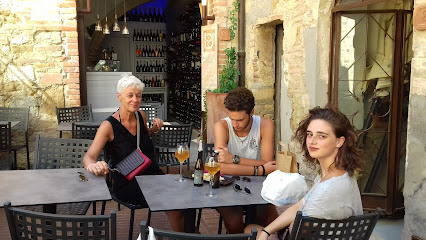
Divinorum Wine Bar
Experience the finest wines and authentic Tuscan flavors at Divinorum Wine Bar in San Gimignano, where every sip tells a story.

Bar La Cisterna
Experience authentic Italian espresso at Bar La Cisterna, a charming café in the heart of San Gimignano with stunning views.
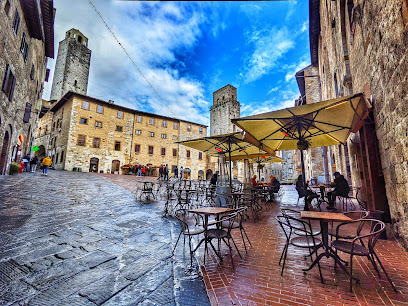
Bar Le Torri - San Gimignano (si)
Experience the charm of Tuscany at Bar Le Torri, a delightful bar in the heart of San Gimignano, perfect for unwinding with local drinks.
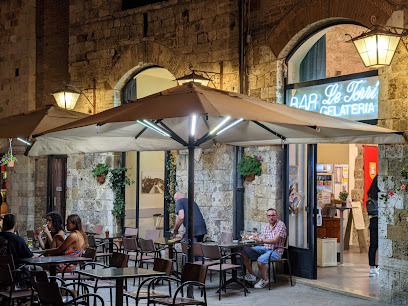
Travel experiences inspired by this city
Explore more travel diariesLocal Phrases
-
- HelloCiao
[chow] - GoodbyeArrivederci
[ar-ree-veh-der-chee] - YesSì
[see] - NoNo
[noh] - Please/You're welcomePer favore/Prego
[pair fah-voh-ray/pray-go] - Thank youGrazie
[grah-tsee-eh] - Excuse me/SorryScusi/Mi dispiace
[skoo-zee/mee dee-spyah-che] - How are you?Come stai?
[koh-meh stai] - Fine. And you?Bene. E tu?
[beh-neh. eh too] - Do you speak English?Parli inglese?
[par-lee een-gleh-zeh] - I don't understandNon capisco
[non kah-pee-skoh]
- HelloCiao
-
- I'd like to see the menu, pleaseVorrei vedere il menù, per favore
[vohr-ray veh-deh-reh eel meh-noo, pair fah-voh-ray] - I don't eat meatNon mangio carne
[non man-joh kahr-neh] - Cheers!Salute!
[sah-loo-teh] - I would like to pay, pleaseVorrei pagare, per favore
[vohr-ray pah-gah-reh, pair fah-voh-ray]
- I'd like to see the menu, pleaseVorrei vedere il menù, per favore
-
- Help!Aiuto!
[ah-yoo-toh] - Go away!Vai via!
[vah-ee vyah] - Call the Police!Chiamate la polizia!
[kyah-mah-teh lah poh-lee-tsyah] - Call a doctor!Chiamate un medico!
[kyah-mah-teh oon meh-dee-koh] - I'm lostMi sono perso
[mee soh-no pehr-soh] - I'm illMi sento male
[mee sehn-toh mah-leh]
- Help!Aiuto!
-
- I'd like to buy...Vorrei comprare...
[vohr-ray com-prah-reh] - I'm just lookingSto solo guardando
[stoh soh-loh gwar-dahn-doh] - How much is it?Quanto costa?
[kwahn-toh koh-stah] - That's too expensiveÈ troppo caro
[eh troh-poh kah-roh] - Can you lower the price?Può abbassare il prezzo?
[pwoh ahb-bahs-sah-reh eel preht-soh]
- I'd like to buy...Vorrei comprare...
-
- What time is it?Che ora è?
[keh oh-rah eh] - It's one o'clockÈ l'una
[eh loo-nah] - Half past (10)Sono le dieci e mezza
[soh-no leh dee-eh-chee eh meh-tzah] - MorningMattina
[maht-tee-nah] - AfternoonPomeriggio
[poh-meh-ree-joh] - EveningSera
[seh-rah] - YesterdayIeri
[yeh-ree] - TodayOggi
[oh-jee] - TomorrowDomani
[doh-mah-nee] - 1Uno
[oo-noh] - 2Due
[doo-eh] - 3Tre
[treh] - 4Quattro
[kwah-troh] - 5Cinque
[cheen-kweh] - 6Sei
[say] - 7Sette
[set-teh] - 8Otto
[oht-toh] - 9Nove
[noh-veh] - 10Dieci
[dee-eh-chee]
- What time is it?Che ora è?
-
- Where's a/the...?Dov'è un/il...?
[doh-veh oon/eel] - What's the address?Qual è l'indirizzo?
[kwal eh leen-dee-reetz-zoh] - Can you show me (on the map)?Può mostrarmi (sulla mappa)?
[pwoh mohs-trar-mee soo-lah mahp-pah] - When's the next (bus)?Quando passa il prossimo (autobus)?
[kwahn-doh pahs-sah eel prohs-see-moh ow-toh-boos] - A ticket (to ....)Un biglietto (per ....)
[oon bee-lyet-toh pair]
- Where's a/the...?Dov'è un/il...?
History of San Gimignano
-
San Gimignano's origins trace back to the Etruscan era, but it was formally founded as a village in the 3rd century BCE. Named after the Bishop of Modena, Saint Geminianus, the town began to flourish during the Middle Ages due to its strategic location on the Via Francigena, a crucial pilgrimage route to Rome.
-
During the 12th and 13th centuries, San Gimignano reached the height of its prosperity. The town became a bustling center of trade and commerce, driven by the local production of saffron and Vernaccia wine. Wealthy families vied to display their status by building towering stone structures, which gave rise to the city's iconic skyline of medieval towers.
-
The mid-14th century brought devastation to San Gimignano with the outbreak of the Black Death. The plague decimated the population, leading to economic decline and the eventual submission of the town to Florence in 1353. This period marked the end of San Gimignano's autonomy and its transformation into a more subdued, provincial town.
-
Despite its decline, San Gimignano saw a cultural revival during the Renaissance. Artists like Domenico Ghirlandaio and Benozzo Gozzoli were commissioned to create works in the town's churches and public buildings. The architectural and artistic heritage from this period has been meticulously preserved, making the town a prime example of medieval and Renaissance urbanism.
-
In 1990, San Gimignano was designated a UNESCO World Heritage Site. This recognition was due to its exceptional medieval architecture, well-preserved towers, and the town's significant role in the cultural and historical landscape of Tuscany. The preservation efforts have ensured that San Gimignano remains a vivid window into Italy's past.
-
San Gimignano hosts several cultural festivals that celebrate its rich heritage. The Ferie delle Messi is an annual medieval festival held in June, featuring historical reenactments, parades, and traditional games. The town also celebrates the harvest with the Festa della Vendemmia, showcasing its renowned Vernaccia wine and local culinary delights.
San Gimignano Essentials
-
San Gimignano is located in the Tuscany region of Italy, approximately halfway between Florence and Siena. The nearest major airports are Florence Airport (FLR) and Pisa International Airport (PSA). From Florence or Siena, you can take a regional train to Poggibonsi, the nearest train station to San Gimignano. From Poggibonsi, a local bus or taxi will take you directly to San Gimignano. Alternatively, car rental services are available at the airports and in major cities, allowing for a scenic drive through the Tuscan countryside.
-
Once in San Gimignano, the best way to explore the town is on foot, as the historic center is pedestrianized. For trips outside the town, taxis and local buses are available. If you plan to visit surrounding areas, renting a car offers flexibility, but be aware that parking within the town is limited and often requires a fee. There are several parking lots just outside the town walls where you can leave your car and walk into the center.
-
Italy uses the Euro (EUR) as its currency. Credit and debit cards are widely accepted in San Gimignano, especially in hotels, restaurants, and shops. However, carrying some cash is advisable for smaller establishments, markets, and rural areas. ATMs are available throughout the town for your convenience.
-
San Gimignano is generally very safe for tourists. Violent crime is rare, but petty theft such as pickpocketing can occur, especially in crowded areas and during peak tourist seasons. Always keep your belongings secure and be cautious in busy areas. There are no specific high-crime neighborhoods targeting tourists in San Gimignano, but it is always good practice to stay vigilant.
-
In case of emergency, dial 112 for immediate assistance, which is the European emergency number. San Gimignano has a local police station and medical facilities. It is advisable to have travel insurance that covers medical emergencies. Pharmacies are available in the town for minor health issues and over-the-counter medications.
-
Fashion: Do dress modestly when visiting religious sites. Avoid wearing overly casual or revealing clothing in churches. Religion: Do respect local customs and traditions. Always cover your shoulders and knees when entering churches. Public Transport: Do be respectful and give up your seat to elderly passengers. Don’t eat or drink on public transport. Greetings: Do greet people with a smile and a 'Buongiorno' (Good day) or 'Buonasera' (Good evening). Personal space is valued, so a handshake is appropriate for initial meetings. Eating & Drinking: Do try local delicacies and wines. Don’t rush your meals; dining is a leisurely activity in Italy. Tipping is not obligatory, but rounding up the bill or leaving small change is appreciated.
-
To experience San Gimignano like a local, visit during the off-peak season when the town is less crowded. Explore the local markets where you can buy fresh produce, artisanal cheeses, and wines. Engage with locals at cafes and try to learn a few basic Italian phrases, as this is often appreciated. Don't miss the opportunity to taste the local Vernaccia wine, which is produced in the region. For a unique experience, take a leisurely stroll through the vineyards and olive groves surrounding the town.
Trending Landmark in San Gimignano
-
Piazza del Duomo
-
Le Vecchie Mura
-
Porta San Giovanni
-
Piazza della Cisterna
-
Chiesa di Sant'Agostino
-
Palazzo Comunale, Pinacoteca, Torre Grossa
-
Museum of Torture
-
Tower and Casa Campatelli
-
Guardastelle
-
Hotel Leon Bianco
-
Parco della Rocca
-
Fonti Medievali
-
Museo Della Tortura E Della Pena Di Morte
-
Podere La Marronaia - Biodynamic Winery & Farm
-
SanGimignano1300
Nearby Cities to San Gimignano
-
Things To Do in Siena
-
Things To Do in Florence
-
Things To Do in Pisa
-
Things To Do in Lucca
-
Things To Do in Arezzo
-
Things To Do in Montepulciano
-
Things To Do in Perugia
-
Things To Do in Bologna
-
Things To Do in Orvieto
-
Things To Do in Chiesanuova
-
Things To Do in Acquaviva
-
Things To Do in Fiorentino
-
Things To Do in San Marino
-
Things To Do in Montegiardino
-
Things To Do in Borgo Maggiore










